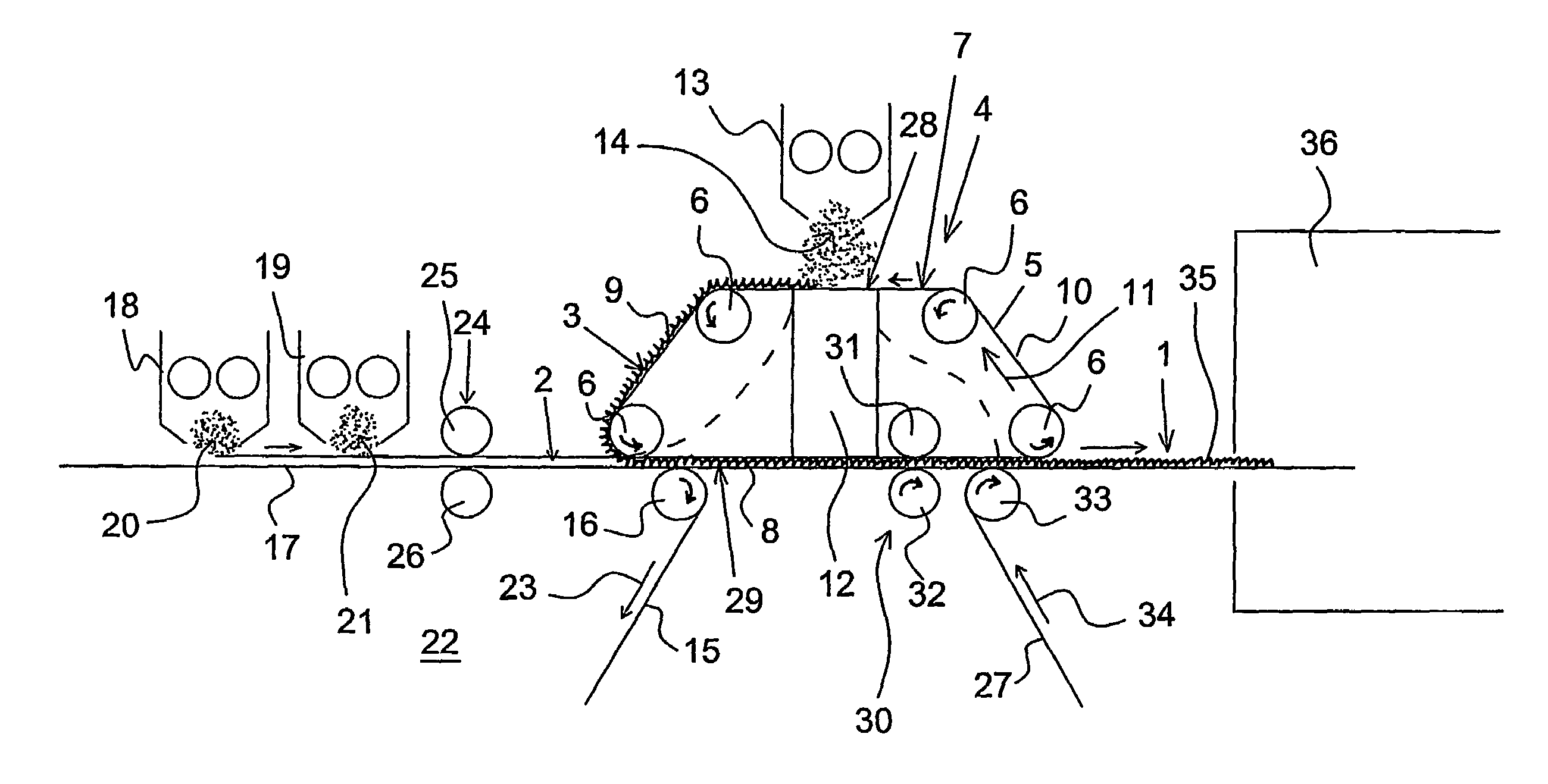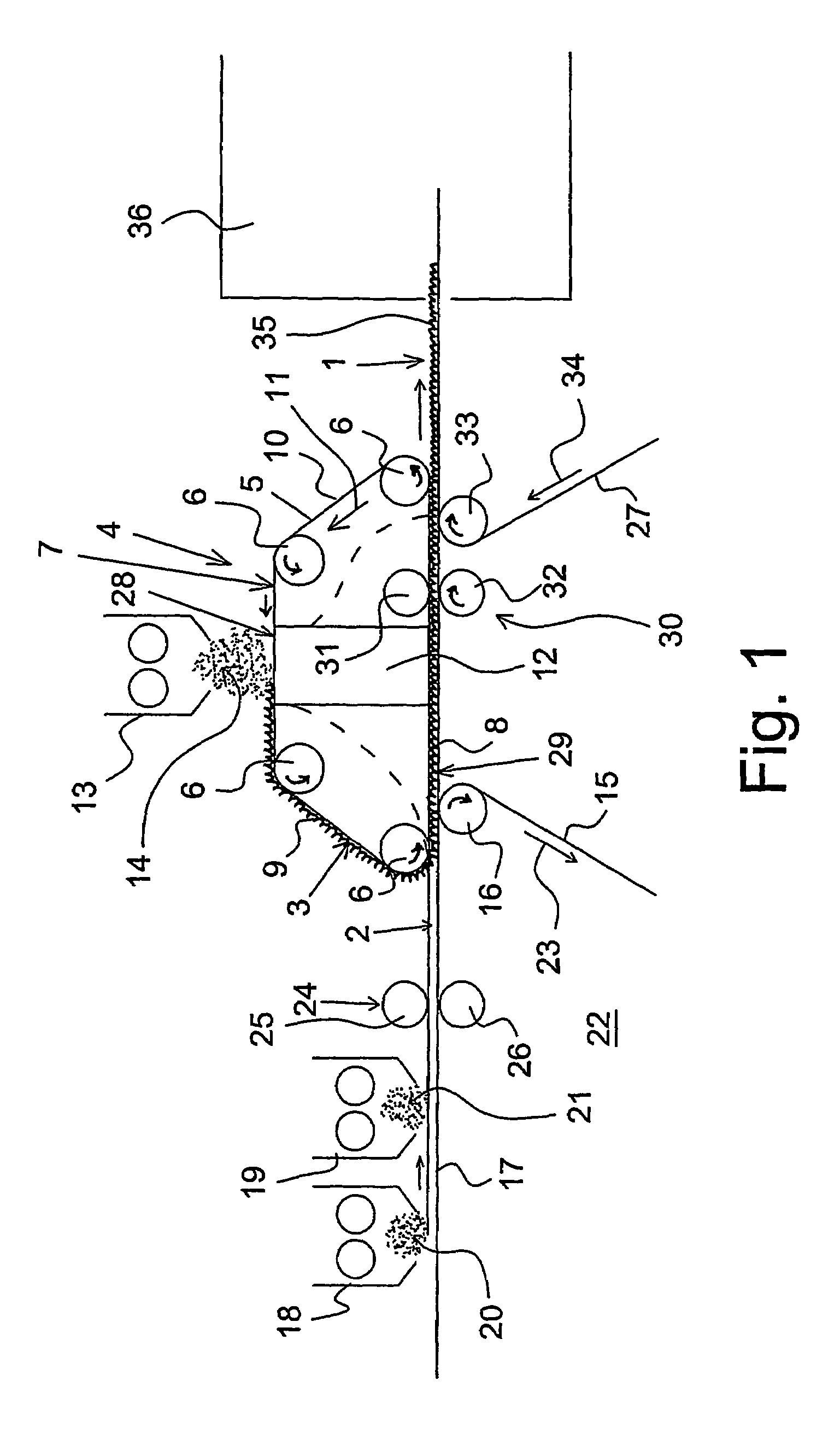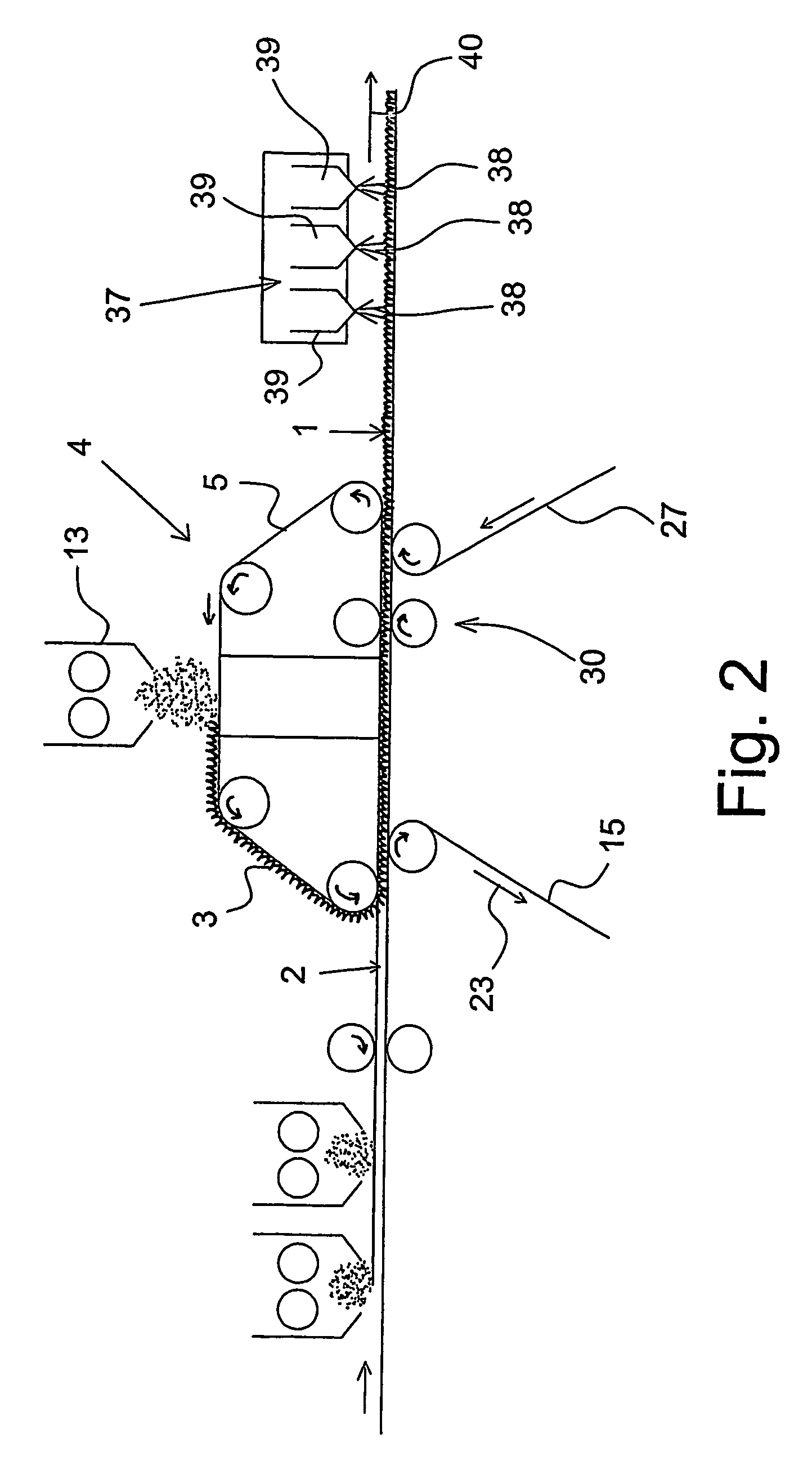Method and apparatus for dry forming of a fabric
a fabric and fabric technology, applied in the field of dry forming, can solve the problems of difficult to establish vacuum in an area between two, reduce the efficiency of the apparatus, and attach the pattern and/or the underside, and achieve the effect of high production speed, and large thickness of the fabri
- Summary
- Abstract
- Description
- Claims
- Application Information
AI Technical Summary
Benefits of technology
Problems solved by technology
Method used
Image
Examples
first embodiment
[0038]the apparatus as illustrated in FIG. 1 may e.g. be used with fibres which can contain binder fibres, e.g. polyester fibres, bicomponent fibres, or other binder fibres. By passing through the oven 36 fixation of the fabric 1 is thus provided.
second embodiment
[0039]In FIG. 2 is illustrated the apparatus according to the invention. In this embodiment, the transfer unit 4 is used for formation of the second non-woven fabric 3 and for transferring the first non-woven fabric 2 which is formed on the forming wire 15 disposed upstream. The conveying wire 27 in the shown embodiment moves the fabric formed of the first and second non-woven fabrics 2, 3 to a further treating unit 37. In the shown embodiment, the treating unit is an arrangement for applying latex 38 which is sprayed on the fabric 1 using nozzles 39. After applying latex, the fabric is moved according to the arrow 40 to a further treating unit which e.g. can be an oven.
third embodiment
[0040]FIG. 3 also includes the transfer unit 4 over which the forming head 13 is disposed for forming the second non-woven fabric 3. In the third embodiment is also formed a first non-woven fabric 2 on the forming wire 15 which is disposed upstream in relation to the transfer unit 4.
[0041]In this third embodiment of the apparatus, the fabric is conveyed on the top side of the conveying wire 27 to a treatment unit 41. The treatment unit 41 is a hydroentanglement unit which fixes the fabric. It is constituted by a principle known per se, embodying a row of water jet nozzles 42, which are disposed above the upper run 35 of the conveying wire 27, providing downwards directed water jets 43. Below the upper run 37 of the conveying wire, other water jet nozzles 44 are provided that each forms an upwards directed water jet 45. The hydroentanglement unit 41 is shown schematically and will in practice look otherwise, but it is arranged so that fixation of the fabric 1 is achieved by a hydroen...
PUM
| Property | Measurement | Unit |
|---|---|---|
| density | aaaaa | aaaaa |
| density | aaaaa | aaaaa |
| density | aaaaa | aaaaa |
Abstract
Description
Claims
Application Information
 Login to View More
Login to View More - R&D
- Intellectual Property
- Life Sciences
- Materials
- Tech Scout
- Unparalleled Data Quality
- Higher Quality Content
- 60% Fewer Hallucinations
Browse by: Latest US Patents, China's latest patents, Technical Efficacy Thesaurus, Application Domain, Technology Topic, Popular Technical Reports.
© 2025 PatSnap. All rights reserved.Legal|Privacy policy|Modern Slavery Act Transparency Statement|Sitemap|About US| Contact US: help@patsnap.com



